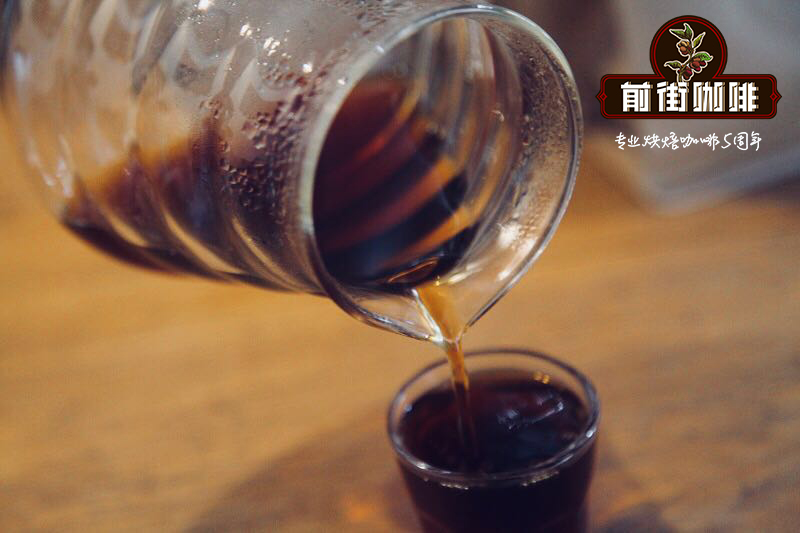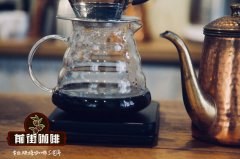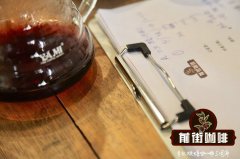Colombia Bella Vista Manor Honey treatment Coffee beans how to drink hand steaming operation flow

Professional coffee knowledge exchange more coffee bean information please follow the coffee workshop (Wechat official account cafe_style)
Colombia Finca Bellavista
Honey treatment of Colombian Coffee Bella Vista Manor
Basic
information
Country: Colombia
Region: Nari ñ o
Manor: Bella Vista
Treatment: honey treatment
After peeling, put it on the scaffolding to dry
Variety: Catura Cadura & Colombia Colombia
Altitude: 2170m
Baking degree: City
Flavor description:
Fruit hard candy, lemon, cranberry, Sugar cane juice, brown sugar, clean and high sweet
Manor
information
Finca Bellavista is located in the province of Nari ñ o in southwestern Colombia, above the equator and bordering Ecuador. The region is surrounded by mountains and is famous for its five volcanoes: Chiles (4718 m), Cumbal (4764 m), Azufral (4070 m), Do ñ a Juana (4250 m) and Galeras (4276 m).
The geographical location surrounded by the mountains shapes the region's unique microclimate. Coffee is usually grown along the steep slopes around the volcano, located on the equator, and can get a superior sunshine angle to ensure adequate sunlight, and up to 2200m above sea level, it can also be regarded as one of the highest plantations in the world, such high altitude planting allows coffee to grow more slowly and fully.
The growers in this area are mostly small farmers who have their own wet treatment plants and scaffolding for drying. Ulpiano Rodrigues, the owner of Finca Bellavista, certainly has his own processing plant, which uses a peeling machine to peel ripe red cherries after harvesting (some of the by-products produced during the treatment are often used as organic fertilizer for coffee trees).
The coffee beans will then be put into the fermentation tank to ferment, and the fermentation time will be arranged according to the local climate, usually as long as 12 to 48 hours. In this process, several layers of coffee shells will be covered on the fermentation tank. Used to increase the complexity of fermentation processing, so as to increase the complexity of coffee flavor.
After the treatment, the raw beans will be placed on the scaffolding to dry. Fortunately, compared with other parts of the country, the micro-climate and high altitude here will bring more sunshine and more wind, so that there is a lower relative humidity here. The unique dry environment creates high-quality coffee beans.
Ulpiano, the owner of Finca Bellavista, has been in close contact with Buesaco Con Altura growers, and the process of working together to improve the quality of coffee has benefited him a lot from coffee cultivation. The growers' Union has also been working to grow better coffee, often with excellent results on COE in Colombia.
MCR has maintained a close and long-term cooperation with Colombian raw bean exporter pergamino. In 2015, its landowner once cooperated with MCR raw bean suppliers to attend the anniversary celebration of the MCR baking plant and had a technology exchange and sharing on the spot.
In early 2016, micro-baking also flew over the world's longest route to Colombia, visited their manor in person, learned about their treatment, and conducted a cup test locally to select beans.
This batch of Colombia is a direct delivery from the origin of Bella Vista Manor. it is the second time that the whole cabinet has imported fine micro-batch raw beans from Colombia after a micro-bake visit to Colombia. In the first cup test, this bean is deeply attracted to us by its bright and refreshing sour and sweet, fructose-like sweetness with rising sugarcane sweetness and long-lasting surprise.
How to make Colombian coffee [Bellamy] well?
Qianjie Coffee hand reference: weigh 15g [Bellamy treatment] coffee powder, pour into the grinder for medium grinding, the finished particles are slightly thicker than salt, we use BG bean grinder to scale 5R (standard sieve pass rate 60%), water temperature 89 degrees, V60 filter cup extraction, recommended powder / water ratio around 1:15.
The hot water in the hand flushing pot draws a circle clockwise with the center of the filter cup. Start the time when brewing, brew the coffee to 30g in 15 seconds, then stop the water injection, and when the time is up to 1 minute, the second water injection. The second water injection is the same as before, draw a circle clockwise with the center of the filter cup, and the water flow should not rush to the place where the coffee powder is connected with the filter paper, so as not to produce channel effect.
Coffee powder to the outermost circle to set aside a circle, and then another circle to the middle, 2 minutes 20 seconds, to the coffee to 220g, brewing coffee is finished.
| | Japanese ice hand flush [Bellamy treatment] |
Qianjie coffee ice hand flushing [Bellamy treatment] reference:
Colombian coffee [Bellamy treatment], light medium roasting, BG bean grinder scale 5m (standard sieve pass rate 67%)
20 grams of powder, 150 grams of ice, 150 grams of hot water. The water temperature is 90 ℃ higher than the recommended normal hand flush, then 1 ℃ higher, the normal grinding small Fuji 3.5 scale, the ice hand flushing is slightly smaller than half a grid-small Fuji 3 scale, the recommended powder (water + ice) ratio is 1:15.
The amount of steaming water is 40 grams and the steaming time is 30 seconds.
Water injection by stages, 60 grams of water in the first section and 40 grams of water in the second section. Use a thin but high water injection column and stir hard to make the coffee powder fully tumble, but be careful that the water level is not too high and do not rush to the edge of the filter paper.
The whole extraction time is about two and a half minutes (close to the normal extraction time of 20 grams of powder).
END
Important Notice :
前街咖啡 FrontStreet Coffee has moved to new addredd:
FrontStreet Coffee Address: 315,Donghua East Road,GuangZhou
Tel:020 38364473
- Prev

Why is it wrong for Colombian milkberries to make coffee with their hands? how to make coffee with multiple hands?
Professional coffee knowledge exchange more coffee bean information please follow the coffee workshop (Wechat official account cafe_style) □ production area: Northern region of Nario □ producer: regional small farmers □ altitude: 1800 □ varieties: Caturra,Castillo,Typica □ treatment: washing □ grade: Supremo □ flavor description: very elegant acidity, caramel, light fruit, light flower fragrance
- Next

Where is Malawian coffee grown? Malawi Rosa Coffee Variety
For more information on coffee beans, please follow the coffee workshop (Wechat official account cafe_style) Africa is known as the birthplace of coffee; for example, Ethiopia is famous for coffee and Tanzania is famous for Kilimanjaro. But did you know that Malawi in East Africa is also famous for producing coffee? There are many attractive places in Malawi, including
Related
- Detailed explanation of Jadeite planting Land in Panamanian Jadeite Manor introduction to the grading system of Jadeite competitive bidding, Red bid, Green bid and Rose Summer
- Story of Coffee planting in Brenka region of Costa Rica Stonehenge Manor anaerobic heavy honey treatment of flavor mouth
- What's on the barrel of Blue Mountain Coffee beans?
- Can American coffee also pull flowers? How to use hot American style to pull out a good-looking pattern?
- Can you make a cold extract with coffee beans? What is the right proportion for cold-extracted coffee formula?
- Indonesian PWN Gold Mandrine Coffee Origin Features Flavor How to Chong? Mandolin coffee is American.
- A brief introduction to the flavor characteristics of Brazilian yellow bourbon coffee beans
- What is the effect of different water quality on the flavor of cold-extracted coffee? What kind of water is best for brewing coffee?
- Why do you think of Rose Summer whenever you mention Panamanian coffee?
- Introduction to the characteristics of authentic blue mountain coffee bean producing areas? What is the CIB Coffee Authority in Jamaica?

